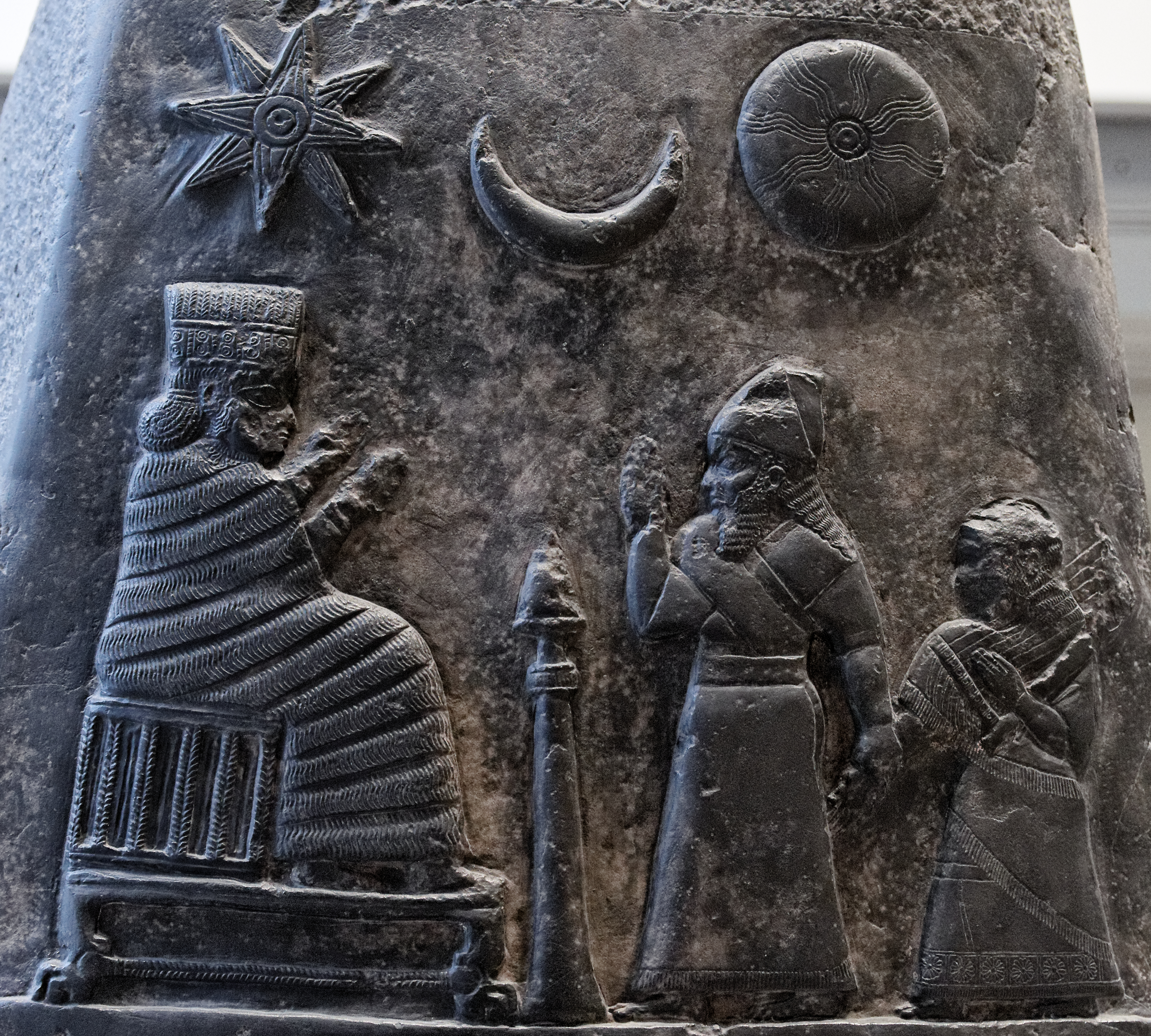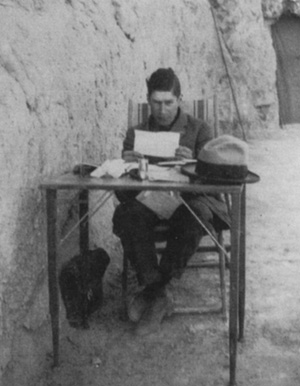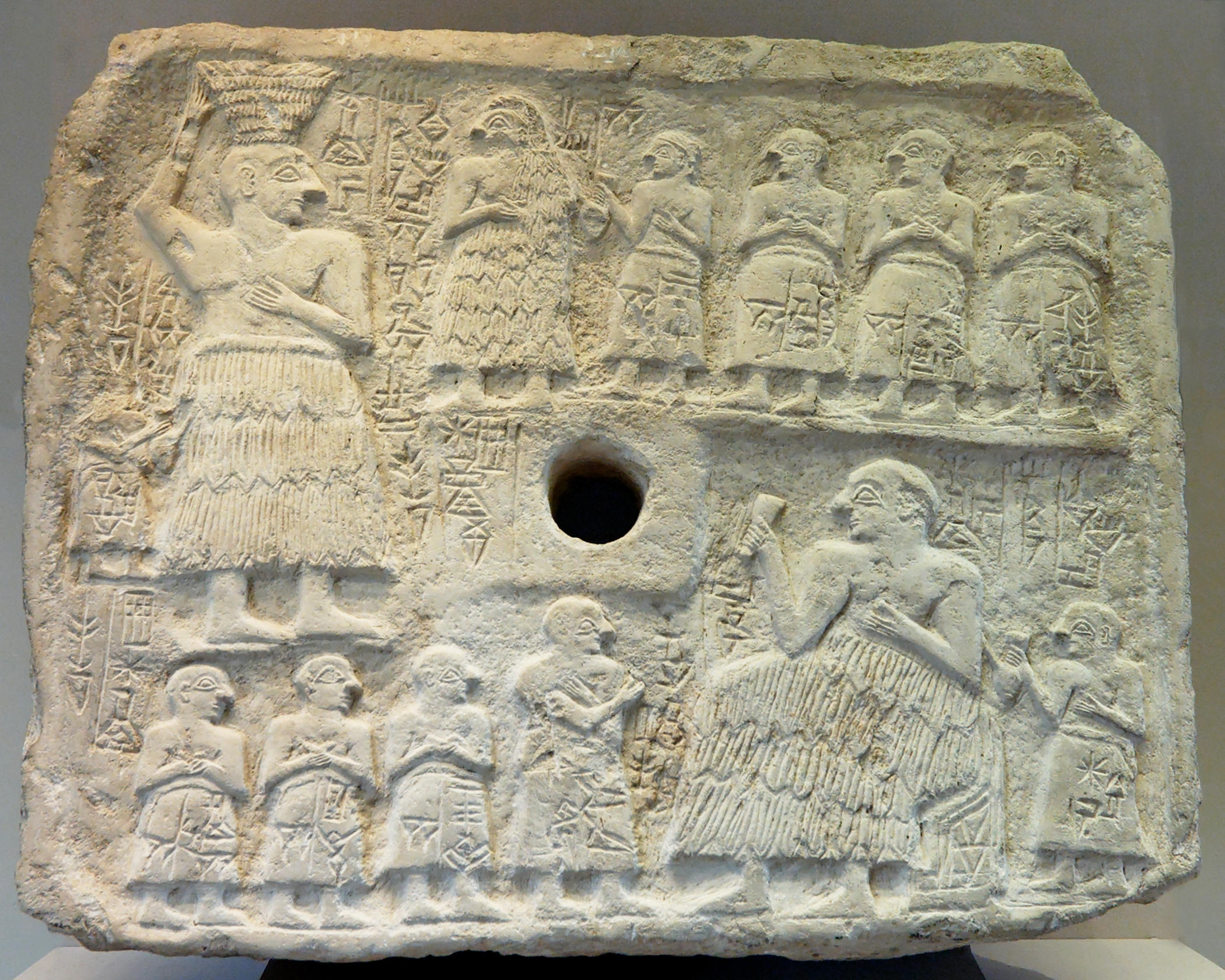|
Akshak
Akshak ( Sumerian: , akšak) (pre-Sargonic - u4kúsu.KI, Ur III - akúsu.KI, Phonetic - ak-su-wa-ak) was a city of ancient Sumer, situated on the northern boundary of Akkad, sometimes identified with Babylonian Upi (Greek Opis). It is known, based on an inscription "‘Ur-kisala, the sangu-priest of Sin of Akshak, son of Na-ti, pasisu-priest of Sin to Salam presented his statue" that there was a temple of the god Sin in Akshak. History Akshak first appears in a Sumerian literary composition ''Dumuzid's dream'', where Dumuzid king of Uruk is said to have been toppled from his opulence by a hungry mob composed of men from the major cities of Sumer, including Akshak. The partially literary Sumerian king list mentions Unzi, Undalulu, Urur, Puzur-Nirah, Ishu-Il and Shu-Sin as kings of Akshak. Puzur-Nirah is also mentioned in the millennia later literary composition ''Weidner Chronicle'' as reigning in Akshak when a female tavern-keeper, Kug-bau of Kish, was appointed overlordship ... [...More Info...] [...Related Items...] OR: [Wikipedia] [Google] [Baidu] |
Sumerian King List
The ''Sumerian King List'' (abbreviated ''SKL'') or ''Chronicle of the One Monarchy'' is an ancient Composition (language), literary composition written in Sumerian language, Sumerian that was likely created and redacted to legitimize the claims to power of various city-states and kingdoms in southern Mesopotamia during the late third and early second millennium BC. It does so by repetitively listing Sumerian cities, the kings that ruled there, and the lengths of their reigns. Especially in the early part of the list, these reigns often span thousands of years. In the oldest known version, dated to the Third Dynasty of Ur, Ur III period () but probably based on Akkadian Empire, Akkadian source material, the ''SKL'' reflected a more linear transition of power from Kish (Sumer), Kish, the first city to receive kingship, to Akkad (city), Akkad. In later versions from the Old Babylonian Empire, Old Babylonian period, the list consisted of a large number of cities between which kingshi ... [...More Info...] [...Related Items...] OR: [Wikipedia] [Google] [Baidu] |
Eannatum
Eannatum ( ; ) was a Sumerian ''Ensi (Sumerian), Ensi'' (ruler or king) of Lagash. He established one of the first verifiable empires in history, subduing Elam and destroying the city of Susa, and extending his domain over the rest of Sumer and Akkad (city), Akkad. One inscription found on a boulder states that Eannatum was his Sumerian name, while his "Tidnu" (Amorites, Amorite) name was ''Lumma#Lumma as a deified king, Lumma''. Conquest of Sumer Eannatum, grandson of Ur-Nanshe and son of Akurgal, was a king of Lagash who conquered all of Sumer, including Ur, Nippur, Akshak (controlled by Zuzu), Larsa, and Uruk (controlled by Enshakushanna, who is on the Sumerian king list, King List). He entered into conflict with Umma, waging a war over the fertile plain of Gu-Edin. He personally commanded an army to subjugate the city-state, and vanquished Ush, king of Umma, Ush, the ruler of Umma, finally making a boundary treaty with Enakalle, successor of Ush, as described in the Stele of th ... [...More Info...] [...Related Items...] OR: [Wikipedia] [Google] [Baidu] |
Kish (Sumer)
Kish (Sumerian language, Sumerian: Kiš; transliteration: :wikt:𒆧, KišKi (earth), ki; cuneiform: ; , near modern Tell al-Uhaymir) is an important archaeological site in Babil Governorate (Iraq), located south of Baghdad and east of the ancient city of Babylon. The Ubaid period site of Ras al-Amiyah is away. It was occupied from the Ubaid period to the Hellenistic period. In Early Dynastic times the city's patron deity was Ishtar with her consort Ea (Babylonian god), Ea. Her temple, at Tell Ingharra, was (E)-hursag-kalama. By Old Babylonian times the patron deity, patron deities had become Zababa, along with his consort, the goddess Bau (goddess), Bau and Istar. His temple Emeteursag (later Ekišiba) was at Uhaimir. History Kish was occupied from the Ubaid period (c.5300–4300 BC), gaining prominence as one of the pre-eminent powers in the region during the Early Dynastic Period (Mesopotamia), Early Dynastic Period when it reached its maximum extent of 230 hectares. [...More Info...] [...Related Items...] OR: [Wikipedia] [Google] [Baidu] |
Kug-bau
Kubaba (, ) was a legendary Mesopotamian queen who according to the ''Sumerian King List'' ruled over Kish for a hundred years before the rise of the dynasty of Akshak. It is typically assumed that she was not a historical figure. Name Kubaba's name was written in cuneiform as ''kù-dba-ú'', ''kù-dbu-ú,'' ''ku-ub-ba-bu-ú'' or ''ku-ub-ba-bu-ú''. It is also romanized as Ku-Baba, with a hyphen separating the elements and the first letter of the theonym capitalized. The first sign can be transcribed as ''kug'' rather than ''ku'', which is reflected by the title of the corresponding entry in the Reallexikon der Assyriologie, Ku(g)-Baba. This name can be translated from Sumerian as "radiant Baba" or "silver of Baba". The correct reading of the last sign in the theonym used as the second element of this theophoric name remains a matter of debate, with /u/ and /wu/ proposed in addition to /ba/. The name of the queen can accordingly be alternatively romanized as Kug-Bau or Kug-Bawu. ... [...More Info...] [...Related Items...] OR: [Wikipedia] [Google] [Baidu] |
Enshakushanna
Enshakushanna (, ; ), or Enshagsagana, En-shag-kush-ana, Enukduanna, En-Shakansha-Ana, En-šakušuana was a king of Uruk around the mid-3rd millennium BC who is named on the ''Sumerian King List'', which states his reign to have been 60 years. He conquered Hamazi, Akkad, Kish, and Nippur, claiming hegemony over all of Sumer. Titulature He adopted the Sumerian title ''en ki-en-gi lugal kalam'' . (), which may be translated as "lord of Sumer and king of all the land" (which possibly implies "'' en'' of the region of Uruk and '' lugal'' of the region of Ur"), and could correspond to the later title ''lugal ki-en-gi ki-uri'' " King of Sumer and Akkad" that eventually came to signify kingship over Mesopotamia as a whole. Reign Enshakushanna's reign is largely characterized by his military campaigns, the most prominent of which was against Kish and Akshak. His attack on these two cities is attested from a stone bowl at Nippur and reads as follows:For Enlil, king of all lands, En ... [...More Info...] [...Related Items...] OR: [Wikipedia] [Google] [Baidu] |
Sin (mythology)
Sin () or Suen (, ) also known as Nanna ( ) is the Mesopotamian god representing the moon. While these two names originate in two different languages, respectively Akkadian language, Akkadian and Sumerian language, Sumerian, they were already used interchangeably to refer to one deity in the Early Dynastic Period (Mesopotamia), Early Dynastic period. They were sometimes combined into the double name Nanna-Suen. A third well attested name is Dilimbabbar (). Additionally, the name of the moon god could be represented by logograms reflecting his lunar character, such as d30 (), referring to days in the lunar month or dU4.SAKAR (), derived from a term referring to the crescent. In addition to his astral role, Sin was also closely associated with cattle herding. Furthermore, there is some evidence that he could serve as a judge of the dead in the Ancient Mesopotamian underworld, underworld. A distinct tradition in which he was regarded either as a god of equal status as the usual hea ... [...More Info...] [...Related Items...] OR: [Wikipedia] [Google] [Baidu] |
Opis
Opis ( Akkadian ''Upî'' or ''Upija/Upiya''; ) was an ancient Near East city near the Tigris, not far from modern Baghdad. The equivalence of Opis and Upi are now usually assumed but not yet proven. Early on it was thought that the ideogram for Upi might refer to Kesh or Akshak. Its location is not yet known with certainty though Tall al-Mujailāt has been proposed. That site has also been suggested as the location of the ancient city of Akshak. Location Akkadian and Greek texts indicate that it was located on the east side of the Tigris, near the Diyala River. The precise site of the city has been uncertain for a long time, though at one point thought to be near or under the city of Seleucia. The site of Tel Abir was also proposed as the location of Opis. Several texts suggest that Upi is in the same area as the city of Akkad, also unlocated, and in the area between Sippar and Eshnunna. Recent geographical surveys of ancient Mesopotamia tentatively identify Opis with ... [...More Info...] [...Related Items...] OR: [Wikipedia] [Google] [Baidu] |
Sumer
Sumer () is the earliest known civilization, located in the historical region of southern Mesopotamia (now south-central Iraq), emerging during the Chalcolithic and Early Bronze Age, early Bronze Ages between the sixth and fifth millennium BC. Like nearby Elam, it is one of the Cradle of civilization, cradles of civilization, along with ancient Egypt, Egypt, the Indus Valley Civilisation, Indus Valley, the Erligang culture of the Yellow River valley, Caral-Supe civilization, Caral-Supe, and Mesoamerica. Living along the valleys of the Tigris and Euphrates rivers, Sumerian farmers grew an abundance of grain and other crops, a surplus of which enabled them to form urban settlements. The world's earliest known texts come from the Sumerian cities of Uruk and Jemdet Nasr, and date to between , following a period of proto-writing . Name The term "Sumer" () comes from the Akkadian Empire, Akkadian name for the "Sumerians", the ancient non-Semitic languages, Semitic-speaking inhabitan ... [...More Info...] [...Related Items...] OR: [Wikipedia] [Google] [Baidu] |
Early Dynastic Period (Mesopotamia)
The Early Dynastic Period (abbreviated ED Period or ED) is an archaeological culture in Mesopotamia (modern-day Iraq) that is generally dated to and was preceded by the Uruk and Jemdet Nasr periods. It saw the development of writing and the formation of the first cities and states. The ED itself was characterized by the existence of multiple city-states: small states with a relatively simple structure that developed and solidified over time. This development ultimately led, directly after this period, to broad Mesopotamian unification under the rule of Sargon, the first monarch of the Akkadian Empire. Despite their political fragmentation, the ED city-states shared a relatively homogeneous material culture. Sumerian cities such as Uruk, Ur, Lagash, Umma, and Nippur located in Lower Mesopotamia were very powerful and influential. To the north and west stretched states centered on cities such as Kish, Mari, Nagar, and Ebla. The study of Central and Lower Mesopotamia has l ... [...More Info...] [...Related Items...] OR: [Wikipedia] [Google] [Baidu] |
Ur III Period
The Third Dynasty of Ur or Ur III was a Sumerian dynasty based in the city of Ur in the 22nd and 21st centuries BC (middle chronology). For a short period they were the preeminent power in Mesopotamia and their realm is sometimes referred to by historians as the Neo-Sumerian Empire. The Third Dynasty of Ur is commonly abbreviated as "Ur III" by historians studying the period. It is numbered in reference to previous dynasties, such as the First Dynasty of Ur (26-25th century BC), but it seems the once supposed Second Dynasty of Ur was never recorded. The Third Dynasty of Ur was the last Sumerian dynasty which came to preeminent power in Mesopotamia. It began after several centuries of control, exerted first by the Akkadian Empire, and then, after its fall, by Gutian and independent Sumerian city-state kings. It controlled the cities of Isin, Larsa, and Eshnunna and extended as far north as Upper Mesopotamia. The Ur III provinces, from north to south were Sippar, Tiwe, Urum, Pu� ... [...More Info...] [...Related Items...] OR: [Wikipedia] [Google] [Baidu] |
Lagash
Lagash (; cuneiform: LAGAŠKI; Sumerian language, Sumerian: ''Lagaš'') was an ancient city-state located northwest of the junction of the Euphrates and Tigris rivers and east of Uruk, about east of the modern town of Al-Shatrah, Iraq. Lagash (modern Al-Hiba in Dhi Qar Governorate) was one of the oldest cities of the Ancient Near East. The ancient site of Nina (Tell Zurghul) is around away and marks the southern limit of the state. Nearby Girsu (modern Telloh), about northwest of Lagash, was the religious center of the Lagash state. The Lagash state's main temple was the E-ninnu at Girsu, dedicated to the god Ningirsu. The Lagash state incorporated the ancient cities of Lagash, Girsu, Nina. History Though some Uruk period pottery shards were found in a surface survey, significant occupation at the site of Lagash began early in the 3rd Millennium BC, in the Early Dynastic Period (Mesopotamia), Early Dynastic I period (c. 2900–2600 BC), surface surveys and excavations show tha ... [...More Info...] [...Related Items...] OR: [Wikipedia] [Google] [Baidu] |
Cities Of The Ancient Near East
The earliest cities in history were in the ancient Near East, an area covering roughly that of the modern Middle East: its history began in the 4th millennium BC and ended, depending on the interpretation of the term, either with the conquest by the Achaemenid Empire in the 6th century BC or with that by Alexander the Great in the 4th century BC. The largest cities of the Bronze Age Near East housed several tens of thousands of people. Memphis in the Early Bronze Age, with some 30,000 inhabitants, was the largest city of the time by far. Ebla is estimated to have had a population of 40,000 inhabitants in the Intermediate Bronze age. Ur in the Middle Bronze Age is estimated to have had some 65,000 inhabitants; Babylon in the Late Bronze Age similarly had a population of some 50,000–60,000. Niniveh had some 20,000–30,000, reaching 100,000 only in the Iron Age (around 700 BC). In Akkadian and Hittite orthography, URU became a determinative sign denoting a city, or combine ... [...More Info...] [...Related Items...] OR: [Wikipedia] [Google] [Baidu] |






